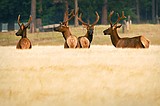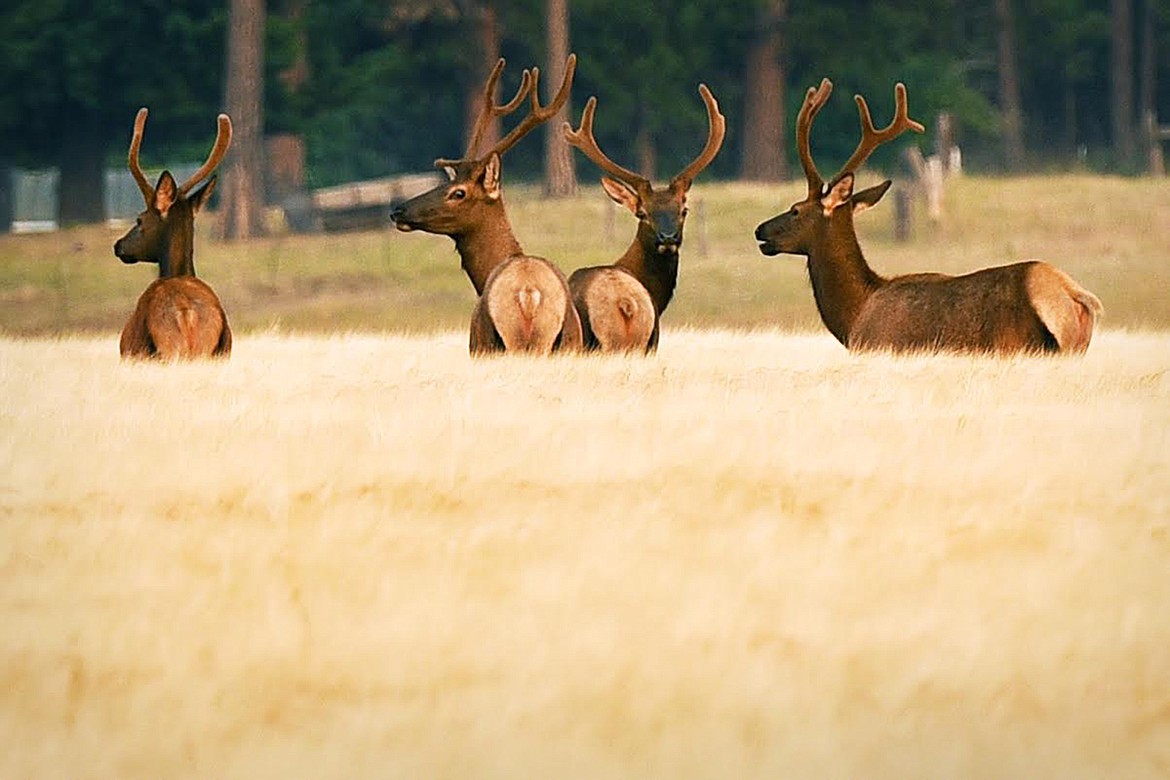Montana's elk hunting traditions worth preserving
Tim Mulligan | Hagadone News Network | UPDATED 4 years, 10 months AGO
For decades Montana has been the envy of hunters who pursue elk. Our state has healthy elk herds because of our incredible habitat on public and private lands. We enjoy the longest season in the West – with a six week archery season and a five week rifle season. No other state comes even close.
With our strong elk herds comes challenges in their management. Landowners at times struggle with the damage that large groups of elk can cause to crops, haystacks and fences. Montana Fish, Wildlife and Parks is faced with a constant balancing act – hunters want a lot of elk, and landowners want fewer.
When I was on the state Fish and Wildlife Commission, we recognized that elk herds were rapidly growing and causing damage in many areas. We recognized that these public resources needed to be managed for the public who value them while at the same time managing the numbers to within landowner tolerance.
That’s why we revamped our statewide elk management plan in 2005. It took two years of extensive work, numerous meetings with the public and landowners, and several edits. The premise of the plan was to use the general season as the primary tool to manage elk along with liberal cow harvest regulations and elk tag numbers in areas that elk populations were over objectives. This was supplemented with game damage hunts and management seasons to harvest elk outside of the general season on private property that allowed hunting but was still experiencing game damage before or after the season.
FWP had been trying late seasons for many years, only to see elk numbers continue to grow and harvest numbers drop. They simply weren’t working to reduce elk numbers. The late seasons were creating a structure that led to large groups of elk migrating to lands that were off limits to hunting resulting in hunters harvesting fewer elk during the general season. Hunter participation and harvest in the late seasons simply wasn’t compensating for the reduced harvest during the general season when the vast majority of hunters were in the field.
To be clear, hunting on private land is a privilege. Private property rights are sacred in Montana. At the same time wildlife is a public trust resource. For decades our best tool for managing the wildlife has been the public hunter in strong partnership with landowners. Hunters and landowners need each other.
But as millions of acres of private land have been locked off to hunting, game damage problems have escalated. This has also increased the hunter numbers for landowners that do allow access. I fear hunters are losing the culture of meeting and appreciating the landowners that do allow access, with some hunters even feeling they have “the right” to hunt Block Management lands rather than recognizing the goodwill of the landowners willing to be in a program that provides desperately needed access for minimal compensation.
In recent years, we’ve seen FWP, under heavy pressure from the Legislature, return to the use of early and late seasons (shoulder seasons) to address elk populations over the objectives. The shoulder seasons were started on a pilot basis and included performance criteria that were meant to ensure they don’t replace the general season harvest and become the old, unsuccessful, late seasons of the past.
In some areas, the shoulder seasons have met the criteria. But in others, they’ve actually backfired, reducing access for elk harvest and increasing elk distribution problems. Statewide an additional 1 million acres of land is now closed to public elk hunting.
The current Commission proposed scaling back some shoulder seasons where they’re not meeting the criteria, and that’s a good start. As we begin writing a new statewide elk management plan that looks at the objectives for elk and other management issues, let’s work to get back to the time of year when the overwhelming number of hunters want to be in the field and there is the highest likelihood of achieving the needed harvest to reduce landowner impacts. And let’s work to rekindle Montana’s longstanding tradition of ethical hunting in cooperation with private landowners. It is worth preserving.
Tim Mulligan was appointed by Gov. Mark Racicot and served on the Fish and Wildlife Commission from 1998 to 2007.
ARTICLES BY TIM MULLIGAN

Montana's elk hunting traditions worth preserving
For decades Montana has been the envy of hunters who pursue elk. Our state has healthy elk herds because of our incredible habitat on public and private lands. We enjoy the longest season in the West – with a six week archery season and a five week rifle season. No other state comes even close.

Montana’s elk hunting traditions worth preserving
For decades Montana has been the envy of hunters who pursue elk. Our state has healthy elk herds because of our incredible habitat on public and private lands. We enjoy the longest season in the West – with a six week archery season and a five week rifle season. No other state comes even close.


